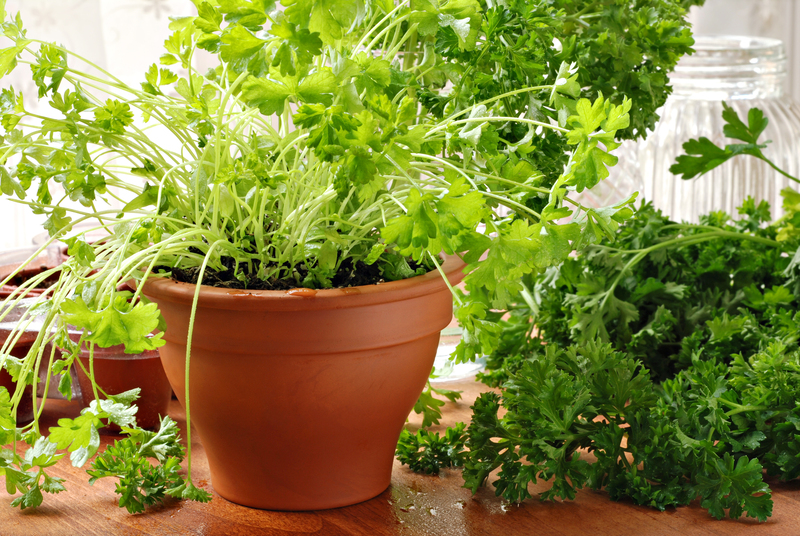Weatherproofing Techniques for Your Garden Sanctuary
Posted on 25/05/2025
Weatherproofing Techniques for Your Garden Sanctuary: A Comprehensive Guide
Transforming your outdoor space into a garden sanctuary is a source of joy, serenity, and connection to nature. However, varying weather conditions pose constant challenges to maintaining a healthy, vibrant, and relaxing retreat. Whether you face blazing summer heat, torrential rains, high winds, frosty winters, or unexpected hailstorms, weatherproofing your garden sanctuary is essential to protect your investments and nurture flourishing plants.
In this detailed guide, discover the most effective and sustainable weatherproofing techniques for your garden haven, ensuring it remains lush and welcoming year-round.

Understanding Weather Threats to Your Outdoor Oasis
Before implementing weatherproofing solutions, it's crucial to identify the specific climatic challenges your garden sanctuary faces. Common threats include:
- Excessive rainfall leading to waterlogged soil and plant diseases
- Strong winds that can uproot delicate plants and damage structures
- Intense sun and heat causing wilting, leaf burn, and water evaporation
- Frost and snow that can kill sensitive species and break branches
- Hailstorms damaging leaves, flowers, and fruits
Recognizing your zone's unique climate risks is the first step in crafting a personalized weatherproofing strategy for your garden retreat.
1. Creating Windbreaks: Shielding Your Sanctuary from Gusts
Wind damage is a common problem in exposed gardens. To protect delicate flowers, shrubs, and outdoor furnishings, consider these wind-blocking strategies:
Install Living Windbreaks
- Rows of dense evergreen shrubs such as holly, yew, or arborvitae create year-round barriers.
- Bamboo hedges grow quickly and offer excellent blockage, but use clumping varieties to prevent invasiveness.
- Tall grasses like pampas or miscanthus provide seasonal protection and aesthetic value.
Structural Wind Screens
- Trellises with climbing vines (like clematis or jasmine) diffuse winds attractively.
- Lattice fences allow some wind through, relieving pressure while safeguarding your plants.
By blending greenery with structural solutions, you'll achieve a safe and visually appealing weatherproof garden sanctuary.
2. Water Management: Preventing Flooding and Root Rot
Excess water poses the risk of soil erosion, fungal diseases, and drowning delicate roots. Mitigate these threats with smart drainage and rainwater control strategies:
Install Rain Gardens and Swales
- Design shallow rain gardens with moisture-loving native plants to absorb excess water.
- Swales--shallow, vegetated dips--direct runoff away from vulnerable areas.
Raise Garden Beds
- Elevated beds help prevent waterlogging, especially in heavy clay soils.
- Fill beds with a mix of compost, sand, and well-draining topsoil for optimal results.
Mulching for Moisture Control
- Apply organic mulch (wood chips, straw, shredded leaves) to slow evaporation, suppress weeds, and gently regulate soil moisture.
3. Sun and Heat Defense: Keeping Plants Cool and Happy
While sunlight is essential, intense heat and prolonged exposure can stress plants and fade garden furniture. Here's how to protect your outdoor sanctuary during sweltering days:
Shade Structures
- Pergolas, awnings, or shade sails provide stylish, semi-permanent relief for patios and sitting areas.
- Erect simple row covers or shade cloth over vegetable beds to prevent sunscald.
- Grow quick-spreading vines (like morning glory or grapevine) over sturdy trellises for natural shade.
Plant Placement and Selection
- Group heat-sensitive plants in shadier spots or beneath taller species.
- Plant drought-tolerant species, such as lavender, sedum, or ornamental grasses, in the sunniest sectors.
Water Wisely
- Water early in the morning or late afternoon to minimize evaporation loss.
- Use drip irrigation systems for efficient moisture delivery.
4. Frost and Cold Weather Protection
Winter weather challenges even the most resilient garden refuges. Prevent plant and infrastructure damage with these tips:
Insulate and Cover Plants
- Use frost blankets, garden fleece, or burlap to wrap vulnerable plants before cold nights.
- Mulch the base of perennial plants thickly to insulate roots against freezing.
- Cover containers or move pots into sheltered spots.
Strategic Placement
- Plant tender species in south-facing beds or near buildings to benefit from reflected warmth.
- Utilize cold frames or mini-greenhouses for year-round vegetable production.
Protect Water Features and Infrastructure
- Drain and cover fountains or ponds to avoid breakages from ice expansion.
- Store garden furniture, cushions, and tools in a shed or under waterproof covers.
5. Hail and Storm-Proofing Techniques
Hail can shred leaves and bruise fruits within minutes. Adopt these practical ideas to minimize storm damage:
Temporary Protective Covers
- Keep pop-up hoop houses or frost blankets handy to cover vulnerable beds when hail is forecast.
- For delicate seedlings or expensive ornamentals, use wire cages draped with row cover material.
Weather-Resistant Structures
- Install polycarbonate panels or reinforced glass in greenhouses to withstand impact.
- Secure trellises and pergolas firmly to the ground to prevent toppling during tempestuous weather.
6. Choosing Weather-Resilient Plants for Lasting Beauty
An essential part of weatherproofing your garden is plant selection. Some species naturally withstand wild weather better than others. Consider:
- Native plants: Most adapted to local climates and pests.
- Drought-tolerant options: Like succulents, agastache, rosemary, and perennial grasses.
- Frost-hardy selections: Including hellebores, pansies, and conifers.
- Wind-resistant shrubs: Such as boxwood, ceanothus, or escallonia.
By integrating robust plants into your garden sanctuary, you'll create a self-sustaining landscape, naturally fortified against fluctuations.
7. Maintaining Your Weatherproofed Garden Sanctuary
Routine maintenance is vital for extending the weatherproofing measures mentioned above. Make sure to:
- Inspect structures regularly for weaknesses, rot, or breaks.
- Replenish mulch and replace damaged covers or stakes as needed.
- Prune overgrown and damaged branches, which can become hazards during storms.
- Monitor drainage after heavy rainfall, adjusting beds or swales if water pooling is observed.
(&_Underlining the importance of proactive care prevents costly damage and keeps your garden retreat a source of peace year after year._)
8. Eco-Friendly and Sustainable Weatherproofing Techniques
Modern weatherproofing solutions go beyond just protection. You can make choices that benefit both your microclimate and the planet:
- Install rain barrels to harvest roof runoff for dry-season irrigation.
- Opt for permeable paving for patios and pathways to support better drainage and groundwater recharge.
- Choose organic mulches and natural fiber covers rather than plastics for ground insulation.
- Compost fallen leaves and plant trimmings on-site for closed-loop soil fertility.
By integrating sustainable methods into your garden weatherproofing plan, your outdoor retreat will be greener in every sense of the word.

Top Tools and Materials for Effective Weatherproofing
Invest in these essentials to make weatherproofing your garden sanctuary efficient and worry-free:
- Quality tarps or garden fleece: For quick plant protection and furniture covering.
- Heavy-duty stakes and anchors: To secure structures and prevent wind damage.
- Flexible waterproof garden covers: Reusable and adjustable for changing seasons.
- Soil moisture meter: To prevent overwatering or under watering during extreme weather.
- Drip irrigation kits: For efficient, targeted watering during heat or drought.
Conclusion: Enjoying Your Weatherproof Garden Refuge in Any Season
Creating a weatherproof garden sanctuary is a rewarding journey, blending artistry, ingenuity, and stewardship. By understanding local risks, choosing resilient plants, installing smart structures, and practicing sustainable care, you can ensure your garden remains a source of beauty, relaxation, and abundance no matter what the skies bring.
Start implementing these weatherproofing techniques today, and reap the benefits of a truly resilient outdoor haven designed for lasting enjoyment and peace of mind. Whether you're seeking solitude, a thriving ecosystem, or a spot for social gatherings, a well-weatherproofed garden sanctuary stands ready to delight in every season.
```
